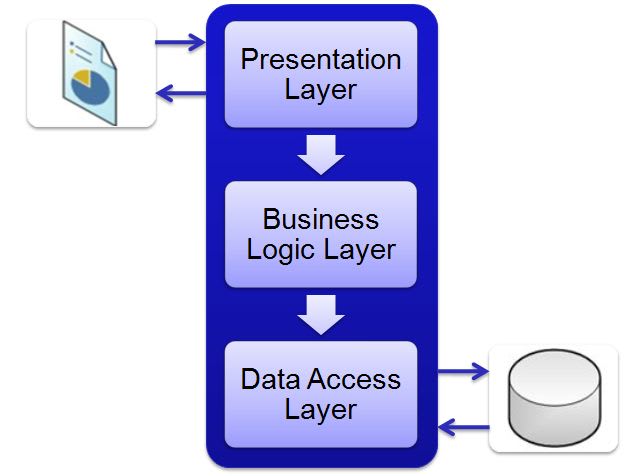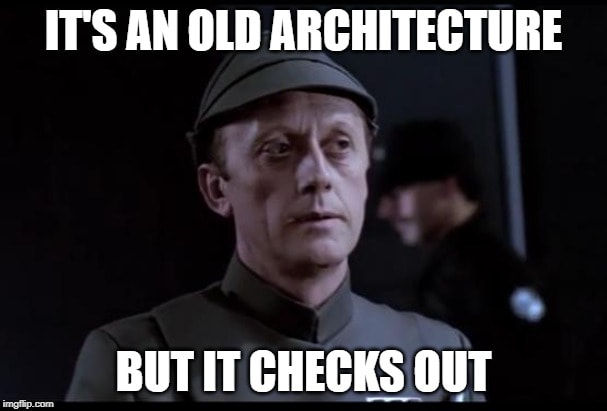Author: Jorge Castro
Viewers: 77
Last month viewers: 5
Package: BladeOne
One of the problems of PHP is not the language but how some developers do a poor job. One solution is to use a framework, but it presents several issues:
- Most are painfully slow so they are not suitable for every situation.
- It requires to train the team in the use of this framework.
- They bring new troubles.
- They add a lot of code, they bloat our code. Laravel, for example, adds +600 classes for only for a single Hello World. Symfony does a better job, but not for much.
So, we will work in what it's known as "vanilla" PHP.
For example, let's say we want to create a web that shows a name.
example1.php
<?php
$name=$_POST['name'];
?>
<h1>Example</h1>
<?php if($name) {?>
<?=$name ?> is a nice name.
<?php } else { ?>
<form method="post">
<input type="text" name="name" value="">
<input type="submit" value="Send">
</form>
<?php } ?>
And it is the result:
The system works, but it shows an annoying warning.
User Input
We could disable on PHP's INI file, but it is not the way to work. Errors and Warnings are our friends; they pinpoint us where there is something that must be fixed.
One solution is to use ISSET
if isset($_POST['name']) $name=$_POST['name'] else $name=null;
However, it's easy to do this one:
$name=@$_POST['name'];
One problem less.
View
The second problem is the code, its horrible.
It is the definition of spaghetti code:
?>
<h1>Example</h1>
<?php if($name) {?>
<?=$name ?> is a nice name.
<?php } else { ?>
<form method="get">
<input type="text" name="name" value="">
<input type="submit" value="Send">
</form>
<?php } ?>
We are mixing logic with HTML. It calls for troubles.
There is a concept called 3-layer-architecture.
For our case, we don't have a persistence (data access) layer. Then, we could separate our code in two.
Is it more code?. Yep but not so much.
Why?
- Let's say we have a design on HTML and we want to integrate.
- Or if we have a web designer and he or she doesn't know (or care) about PHP.
- Or if we want to refactorize the UI, for example, to add changes to the UI without touching the code.
example2.php
<?php
$name=@$_POST['name'];
include "example2ui.php";
example2ui.php
<h1>Example</h1>
<?php if($name) {?>
<?=$name ?> is a nice name.
<?php } else { ?>
<form method="get">
<input type="text" name="name" value="">
<input type="submit" value="Send">
</form>
<?php } ?>
So, we separate our code in two. One is the "logic," and the second is the view (HTML).
We are doing it fine but example2ui.php is still ugly. Ugly in the concept that we can't hope a web-designer could work with it. Also:
Security
Let's say our name is :
< script >alert('hi');< /script >
Why?. Fathers hippies or something like that.
It is the result:
It is a simple alert, but it opens the door to hackers. A simple alert is harmless, but what if this code sends information to a remote server.
example2ui.php
<h1>Example</h1>
<?php if($name) {?>
<?php echo htmlentities($name); ?> is a nice name.
<?php } else { ?>
<form method="post">
<input type="text" name="name" value="">
<input type="submit" value="Send">
</form>
<?php } ?>
We added htmlentities(), so our view is safe.
However, our view is still spaghetti.
And what if we have 20 or 30 variables and 30 or 40 pages. Our solution is not scalable at all. Why? Because it is prone to mistakes. What if we forget to use hmtlentities() (20 variables x 30 pages = 600 changes to commit a mistake).
View (revisited)
We must do something about our view. First, our view must be safe, and second, our view must be easy to write and to maintain. The solution is to use a template library, and we will use the next one:
How to install it? It could be installed via composer, but it could be downloaded. It is a simple file.
Let's say we don't want to use Composer (it is recommended); then we could download this file:
https://github.com/EFTEC/BladeOne/blob/master/lib/BladeOne.php
It is our third version:
example3.php
<?php
include "BladeOne.php"; // our file downloaded from Internet.
$name=@$_POST['name'];
$blade=new \eftec\bladeone\BladeOne();
$data=['name'=>$name]; // data to send from our logic -> view
echo $blade->run('example',$data);
- It includes our library
- It reads the information from POST.
- Then it creates a new instance of the class BladeOne
- Also, we collect our information. What we should show.
- Finally, we join our "view" (called example that corresponds to the file /view/example.blade.php) with our data.
And our view
/view/example.blade.php (we need to create a folder called view)
<h1>Example</h1>
@if($name)
{{$name}} is a nice name.
@else
<form method="post">
<input type="text" name="name" value="">
<input type="submit" value="Send">
</form>
@endif
This view doesn't contain any PHP code but it uses some sort of new annotation:
- @ to call some methods defined by Blade.
- { { } } to escape (htmlentities()) a variable
- { !! !! } to show a variable un-escaped.
It is based on Larave's Blade language. It's quite simple: some conditionals, show some value, loop another value, include this and these. It is not a programming language, so a smart web designer could learn it in a weekend.
It is our result:
Fine but ugly. So, let's modify our view.
4th version:
example3.php (it's the same than the 3rd version)
<?php
include "BladeOne.php"; // our file downloaded from Internet.
$name=@$_POST['name'];
$blade=new \eftec\bladeone\BladeOne();
$data=['name'=>$name]; // data to send from our logic -> view
echo $blade->run('example',$data);
/view/example.blade.php
<link rel="stylesheet" href="https://stackpath.bootstrapcdn.com/bootstrap/4.3.1/css/bootstrap.min.css" integrity="sha384-ggOyR0iXCbMQv3Xipma34MD+dH/1fQ784/j6cY/iJTQUOhcWr7x9JvoRxT2MZw1T" crossorigin="anonymous">
<div class="container">
<div class="row">
<div class="col">
<div class="card">
<div class="card-header">Example</div>
<div class="card-body">
@if($name)
<div class="alert alert-primary" role="alert">
{{$name}} is a nice name.
</div>
@else
<form method="post" class="form-inline">
<input type="text" class="form-control col-3" name="name" value="">
<input type="submit" class="btn btn-primary" value="Send">
</form>
@endif
</div>
</div>
</div>
</div>
</div>
It is our result:
Final Question
Oh wait, is it not MVC?.
Yes, it is a basic version of MVC:
- example3.php is the CONTROLLER
- /view/example.blade.php is the VIEW
- and $data is the MODEL (some people call MODEL the data access layer).
And it is also 3-layer friendly. And it complies with SRP. And it's also KISS. Nice.
Note
Programming is exactly like surfing. We must follow the flow (What we call architecture, pattern or other names)
We could use a framework.
Easy but not cool.
We could do a spaghetti code.
And it is valid for every language.
You need to be a registered user or login to post a comment
1,617,662 PHP developers registered to the PHP Classes site.
Be One of Us!
Login Immediately with your account on:
Comments:
No comments were submitted yet.













